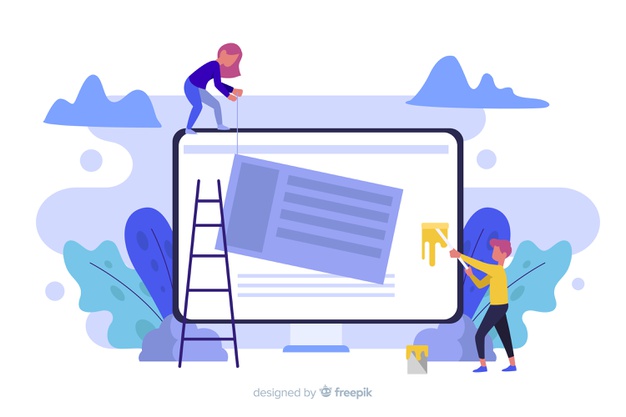So, the need to build/rebuild a website has taken form. Now, it’s time to draw up the corresponding web design brief. It’s crucial to precede the actual creation of the website with a design brief. It sets the general guidelines all the team will have to observe. It ensures all team members communicate well and have the same references when speaking about the new site to build. Let’s see what the points to include in the web design brief are, to create a smooth process of developing the new website and make sure it will finally look the way you all wanted:
Write down 10 words representative of the new website
These will be the key expressions by which you define the website. They might bring new elements to the table, or they might take some specificities from the old version of the website. These words might be the result of some brainstorming sessions. Try to use those words in creating all the design brief. Use them all through the document. And make them main guidelines in creating the new website. And with these words defining pillar principles for creating the website, start drawing up the structure of it. Then try to customize it to best represent the message you have to convey to users.
Let’s plunge into the details of the web design brief:
Describe the Business
To make sure all team members fully understand how to design the website, it’s essential to describe the business that’ll be presented on the website. What’s the sizeof the business, how many members does the team have, what’s the annual turnover? The mission, the vision and the values of the company should also be explicitly formulated.
The brand personality (formal, casual, friendly) needs to be communicated, as well. Depending on the brand personality, the website design will have a particular style. What do you sell? What are the products, services that your business puts on the market? When was the company founded and what are the milestones that served to consolidating the business? What are the short-term business goals? What about the long-term business goals?
Outline the Website
First and foremost, define the purpose of the website. The main purpose will be divided into specific goals, such as creating brand awareness, or driving traffic, or increasing sales, etc. Why hasn’t this purpose been attained before (with the old site), or why hasn’t it been attained any longer? How should the new website be to successfully reach the target? Who is the website addressed to? The target audience should be described here.
Next, you should specify the functions the new website needs, to reach its audience. This will result in describing the perfect structure for the website. Next, and in accordance with the first point in the design brief, you should specify how you would like the website to represent the company. How should the website integrate brand values, through its colors, logo, title and structure of the content? Moreover, you should indicate what the unique value proposition of the company is. The web design brief should include mentions to this aspect of differentiation.
Present the Users of the Website
You should provide clear information about the users you want to target with the website. Who do you want to come and visit the website, and eventually convert to clients? You should make user profiles for the visitors you expect the website will have: specify the demographics, age, gender, income level, geographic area, etc. All these should form users’ profiles towards which the website message will be directed purposefully.
Next, you should identify the different buying stages of users you target with the website. Note down what the buying stage most of the users are at, from interest and analysis, to further research and even purchase. Furthermore, you should specify what tools shouldbe used for measuring traffic and engagement with the website.
Figure Out the Design
Here come some design guidelines for:
The appearance and look of the website, of the homepage as well as the inner pages. Colors,fonts, icons, typography to use, all are elements that indicate what to select to best represent the website, and hence, the company as a whole. Think of how you need to transmit the message, to be well understood so that the business should communicate effectively with the readers. What are the particularities of the content that should be used for a clear, concise, effective message that gets to the public the way you want?
At this point, you should think of including a few similar websites you’ll give as examples to follow. Specify why they are to be retained, and what makes them good examples to follow? Go on to drafting a promotion strategy for the new website launch.
Mention the Allocated Budget and Specify the Timeline
Last, but not least, you have to mention data related to budget and timeline. Do you have a limited sum for the website creation? Does the website need to be ready in a certain timeframe? (When does the first version of the website need to be ready? When should the final version of the website be ready?) What’s the marketing budget for the next 3 to 6 months?
Hope the above list will help creating web design briefs that will unmistakably make the website creation a great success!



